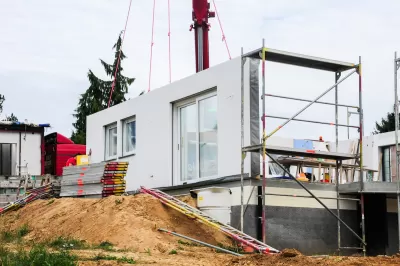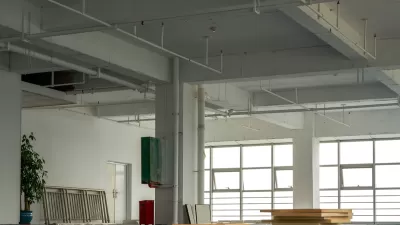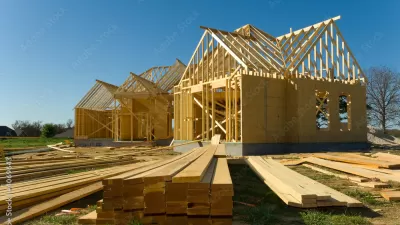Industry leaders say a national set of standards for off-site construction of modular housing would boost the affordable housing stock and make construction faster.

In an opinion piece published in Governing, Matt Belcher, chair of the National Association of Home Builders’ (NAHB) Building Systems Council, argues for reforming regulations governing prefabricated housing construction, which according to Belcher is limited by “a patchwork of state and local regulatory requirements and a lack of understanding of the off-site construction process.”
The diversity of regulations, where they exist, hinders the ability of builders to scale regionally, Belcher writes. Belcher includes a list of benefits of prefabricated, or off-site, construction, which “can deliver projects 20 to 50 percent faster than traditional methods at a cost savings of up to 20 percent” and produce less waste than traditional construction sites.
Belcher advocates for the adoption of a nationwide standard based on local and state regulations developed by Salt Lake City and Virginia, suggested by the International Code Council and Modular Building Institute. “Developed and supported by a broad cross-section of manufacturers, builders, design professionals, affordable-housing advocates and building code officials, ICC/MBI Standards 1200 and 1205 capture best practices from across the country to streamline the deployment of modular projects.”
In Belcher’s view, “Off-site construction offers a unique means to tackle the affordable-housing crisis head on. Policymakers and industry leaders must work together to remove regulatory barriers, including the patchwork application of inconsistent building standards, that are stifling its growth.”
FULL STORY: A Unique Opportunity to Address the Affordable-Housing Crisis: Off-Site Construction

Alabama: Trump Terminates Settlements for Black Communities Harmed By Raw Sewage
Trump deemed the landmark civil rights agreement “illegal DEI and environmental justice policy.”

Planetizen Federal Action Tracker
A weekly monitor of how Trump’s orders and actions are impacting planners and planning in America.

The 120 Year Old Tiny Home Villages That Sheltered San Francisco’s Earthquake Refugees
More than a century ago, San Francisco mobilized to house thousands of residents displaced by the 1906 earthquake. Could their strategy offer a model for the present?

In Both Crashes and Crime, Public Transportation is Far Safer than Driving
Contrary to popular assumptions, public transportation has far lower crash and crime rates than automobile travel. For safer communities, improve and encourage transit travel.

Report: Zoning Reforms Should Complement Nashville’s Ambitious Transit Plan
Without reform, restrictive zoning codes will limit the impact of the city’s planned transit expansion and could exclude some of the residents who depend on transit the most.

Judge Orders Release of Frozen IRA, IIJA Funding
The decision is a victory for environmental groups who charged that freezing funds for critical infrastructure and disaster response programs caused “real and irreparable harm” to communities.
Urban Design for Planners 1: Software Tools
This six-course series explores essential urban design concepts using open source software and equips planners with the tools they need to participate fully in the urban design process.
Planning for Universal Design
Learn the tools for implementing Universal Design in planning regulations.
Clanton & Associates, Inc.
Jessamine County Fiscal Court
Institute for Housing and Urban Development Studies (IHS)
City of Grandview
Harvard GSD Executive Education
Toledo-Lucas County Plan Commissions
Salt Lake City
NYU Wagner Graduate School of Public Service





























